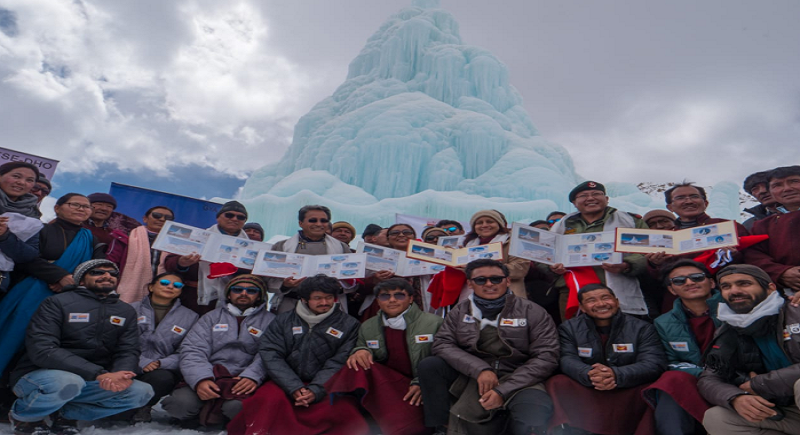Never spend a drop of water before you save it…..!! New winter tourism attractions in Ladakh
Ladakh, March 22: A mindblowing example of water conservation in the Himalayan region, which saves wastewater and utilised in adverse condition. on the World Water Day, let's review the efforts to flourish the area. Ladakh is a trans-Himalayan mountain desert in the extreme north of India with villages located at 2,700m to 4,000m altitudes. It is a cold desert with winter temperatures touching -30° C, and an average annual rain/snowfall of only 100 mm.

This winter after two years of experiments at SECMOL Alternative Institute the Pheyang Monastery near the institute will see the making of ice stupa from artificial glaciers which store this wasting winter water in the form of ice mountains that melt and feed the farms when water is most needed by the farmers.
This project has been initiated by His Holiness Drikung Skyabgon Chetsang Rinpochey and executed in partnership with SECMOL. To provide a platform for further innovations, The Himalayan Institute of Alternatives, Ladakh(HIAL) is being planned.
Most villages face acute water shortage, particularly during the two crucial months of April and May when there is little water in the streams andall the villagers compete to water their newly planted crops.
By mid-June, there is an excess of water and even flash flooding due to the fast melting of the snow and glaciers in the mountains. By mid-September, all farming activities end, and yet a smaller stream flows throughout the winter steadily but wastefully going into the Indus river without being of use to anybody.
By mid-September, all farming activities end, and yet a smaller stream flows throughout the winter steadily but wastefully going into the Indus river without being of use to anybody.